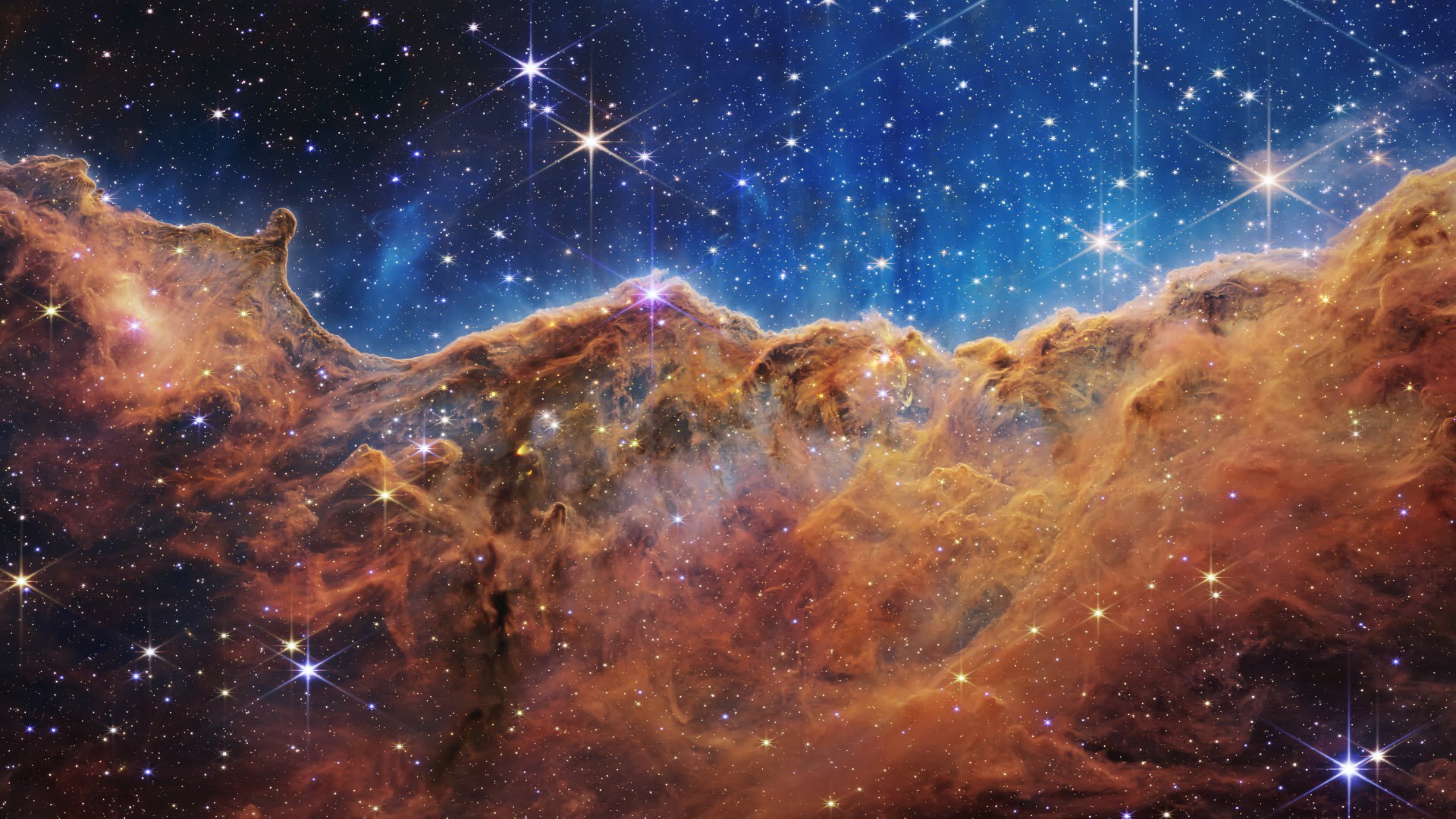
Replay: One year ago today, NASA released the first images from the James Webb Space Telescope and they were absolutely spectacular.
The first, full-colour image from the James Webb Space Telescope was released in 12 July 2022 after a special presentation to President Biden in the White House. NASA administrator, Bill Nelson, unveiled the first teaser picture, now known as Webb’s First Deep Field, at a special last-minute briefing.
"Webb's First Deep Field is not only the first full-colour image from the James Webb Space Telescope, it’s the deepest and sharpest infrared image of the distant universe, so far. This image covers a patch of sky approximately the size of a grain of sand held at arm’s length. It’s just a tiny sliver of the vast universe," said NASA Administrator Bill Nelson. “This mission was made possible by human ingenuity – the incredible NASA Webb team and our international partners at the European Space Agency and the Canadian Space Agency. Webb is just the start of what we can accomplish in the future when we work together for the benefit of humanity."
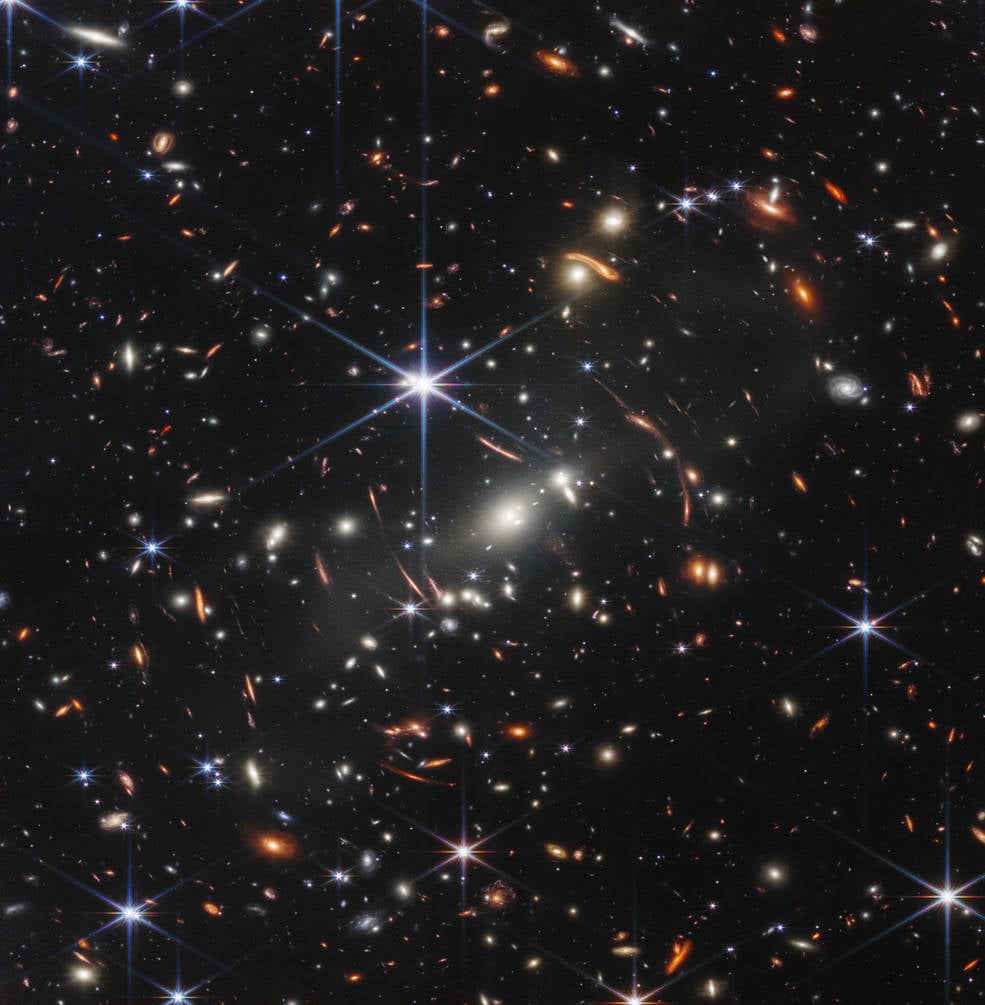
The pic — and we’re expecting a lot more to be released later today at the 14.30 UTC NASA press conference — shows a region of the sky in the Southern Hemisphere constellation of Volans called SMACS 0723 which is filled with massive galaxy clusters 4.6 billion light-years away. So big is this cluster is that its combined mass acts as a gravitational lens, magnifying even more distant galaxies behind it.
Webb’s NIRCam has brought those distant galaxies into sharp focus – they have tiny, faint structures that have never been seen before, including star clusters and diffuse features. Some of these galaxies are over 13 billion years old
The BBC did a useful side-by-side comparison of the same image taken via Hubble. You can see that Webb obviously features much more detail, but the other key factor is the time it took to capture the image. Webb’s picture is a composite made from images at different wavelengths, totalling 12.5 hours of exposure. This see it already achieving depths at infrared wavelengths beyond the Hubble Space Telescope’s deepest fields, which took weeks.
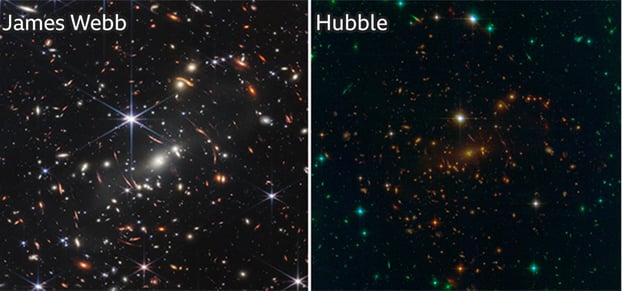
So, what else are we going to see later? The objects below represent the first wave of full-colour scientific images and spectra the observatory has gathered, and the official beginning of Webb’s general science operations, so hopefully some images from these targets at least. They were selected by an international committee of representatives from NASA, ESA, CSA, and the Space Telescope Science Institute.
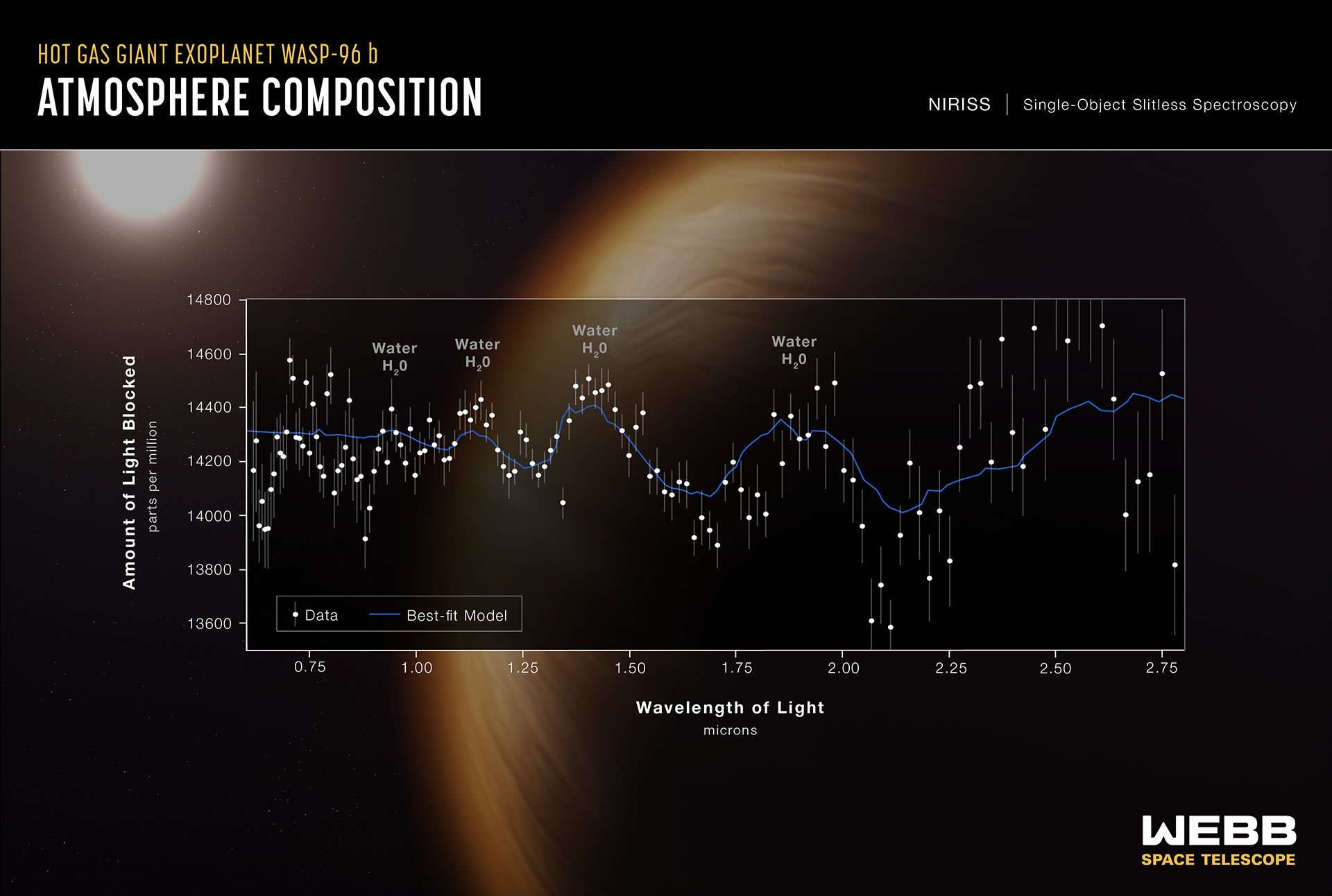
WASP-96 b (spectrum). WASP-96 b is a giant planet outside our solar system, composed mainly of gas. The planet, located nearly 1,150 light-years from Earth, orbits its star every 3.4 days. It has about half the mass of Jupiter, and its discovery was announced in 2014. As you can see above, Webb has captured the distinct signature of water, along with evidence for clouds and haze, in the atmosphere surrounding a hot, puffy gas giant planet orbiting a distant Sun-like star.
Carina Nebula (main pic) aka The Cosmic Cliffs. The Carina Nebula is one of the largest and brightest nebulae in the sky, located approximately 7,600 light-years away in the southern constellation Carina. Nebulae are stellar nurseries where stars form. The Carina Nebula is home to many massive stars, several times larger than the Sun.
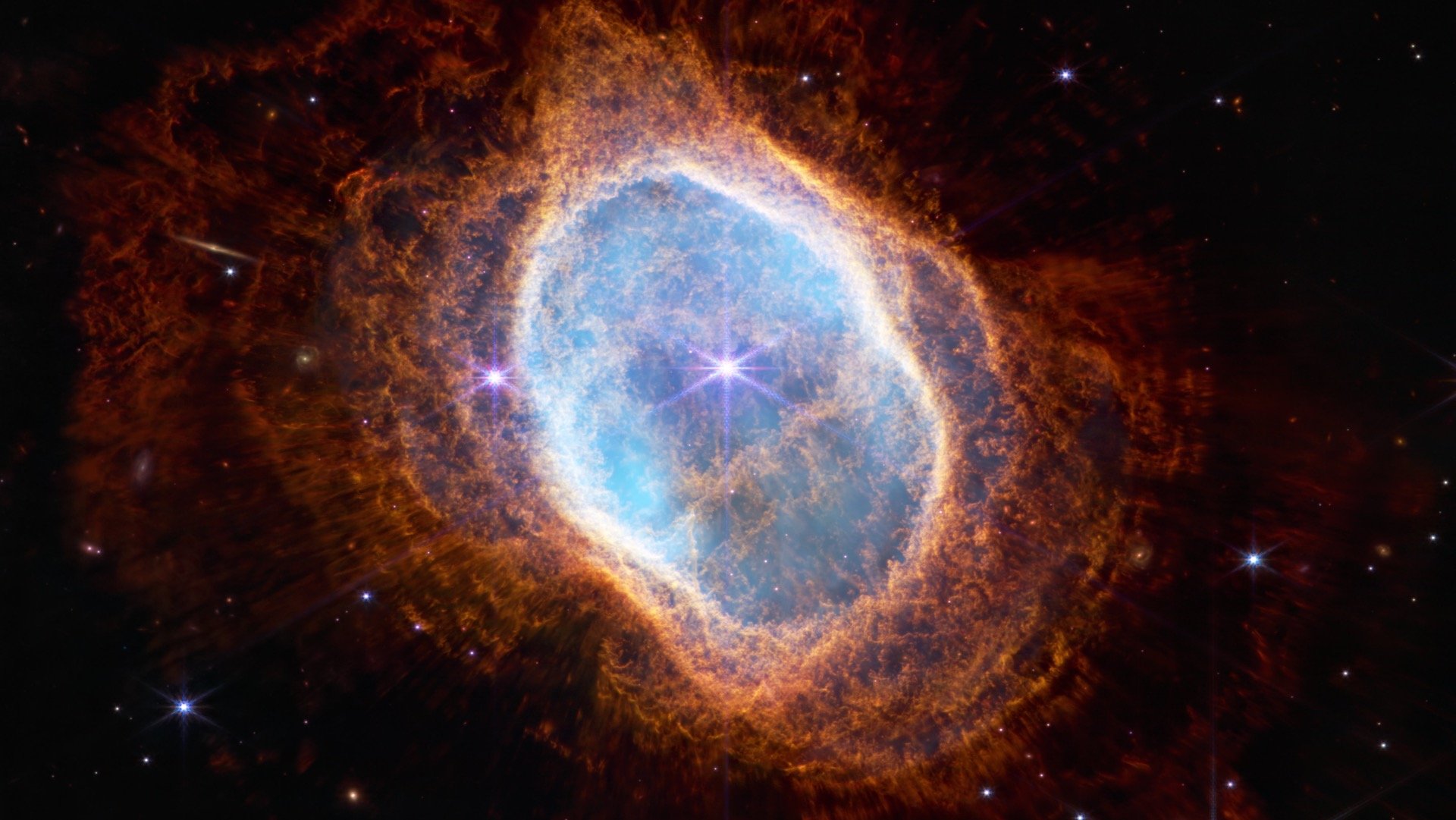
Southern Ring Nebula. The Southern Ring, or “Eight-Burst” nebula, is a planetary nebula – an expanding cloud of gas, surrounding a dying star. It is nearly half a light-year in diameter and is located approximately 2,000 light years away from Earth. Two cameras aboard Webb captured the latest image of this planetary nebula, cataloged as NGC 3132, and known informally as the Southern Ring Nebula. It is approximately 2,500 light-years away.
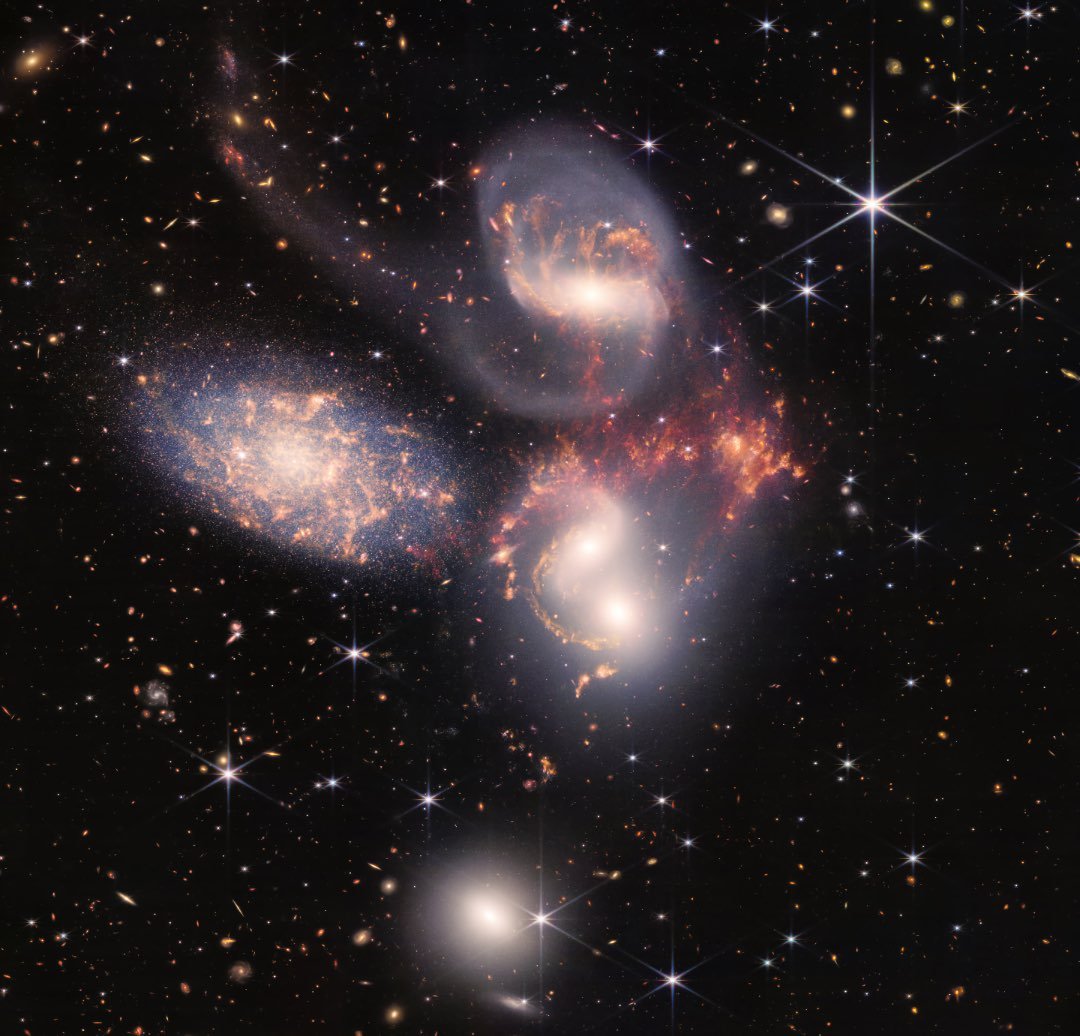
Stephan’s Quintet: About 290 million light-years away, Stephan’s Quintet is located in the constellation Pegasus. It is notable for being the first compact galaxy group ever discovered in 1877. Four of the five galaxies within the quintet are locked in a cosmic dance of repeated close encounters.
The first images Webb sent back were almost comically mundane housekeeping ones proving that its instruments worked.. From here on in, expect them to just get steadily more spectacular.
Tags: Technology Space


Comments